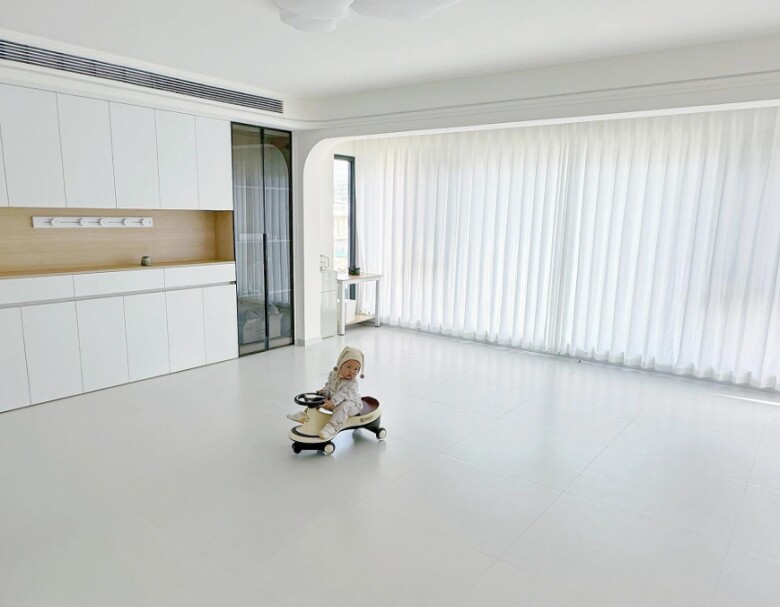The modern lifestyle has brought about a shift in furniture choices, with an increasing number of people opting to forgo the traditional sofa in their living rooms. Some families have even decided to get rid of sofas altogether. So, what’s driving this change in trend?

Reasons for the Change in Trend:
1. Creating More Space and a Sense of Airiness
The living room is typically the heart of the home, where families gather and guests are entertained. However, introducing a sofa into this space can reduce the usable area, making it feel cramped, especially in smaller rooms. By removing the sofa, you instantly create a sense of spaciousness, with improved visibility and flexibility in furniture arrangement. This freedom allows for the creation of dedicated zones, such as a gym, play area, or study, enhancing the overall living experience and comfort for all family members.
2. Avoiding Dead Spaces and Simplifying Cleaning
More furniture often means more nooks and crannies that are difficult to clean. Sofas, especially those with low legs, tend to trap dust and dirt underneath, making cleaning a challenge. Additionally, with young children in the home, the area around the sofa can quickly become a repository for toys and food crumbs, creating a messy and unhygienic environment. Removing the sofa simplifies cleaning routines, ensuring that all areas are easily accessible for thorough cleaning, thus maintaining a comfortable and healthy living space for your family.

3. Enhanced Functionality and Flexibility
A sofa in the living room often restricts space planning. While you can reposition it, the area it occupies remains unchanged, limiting your options when you want to transform the room’s function. Removing the sofa frees up space and allows for easy adaptation to different needs. You can now effortlessly create a play area, a cozy reading nook, or a more intimate conversation space, all while maintaining the room’s versatility and enhancing its convenience for your family’s diverse activities.
What’s the Preferred Design Trend to Replace Sofas?
1. Opting for Single-Seater Sofas
A popular choice is to use single-seater sofas instead of bulky, traditional sofas. These smaller sofas are easy to move around and provide flexibility in arrangement, allowing you to customize your space as needed. They also create a relaxed and informal atmosphere, especially when paired with other furniture like coffee tables and floor cushions, maximizing the usable area and offering a fresh and comfortable daily living experience.

2. Creating a Parent-Child Play Area
For families with young children, the living room can be transformed into a dedicated play area for both parents and kids. This spacious area encourages family bonding through play and provides ample room for children to explore and develop their motor skills. Soft floor mats, toy shelves, and designated zones for reading, arts, and crafts create a stimulating environment. As children grow, this versatile space can be easily adapted for other purposes, such as a study area or entertainment hub, ensuring the room remains relevant to the family’s evolving needs.

3. Establishing a Study Area
Many individuals are now choosing to convert their living rooms into study and work areas for the entire family. By installing bookshelves and creating a cozy reading nook, you can foster a love of learning and bring everyone together in a warm and inviting space. A large table can serve as a central workspace for both adults and children, promoting a sense of camaraderie and making the room a hub for both relaxation and productivity.







































